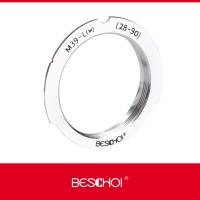What Is Endoscopic Remission In Chrons Disease ?
Endoscopic remission in Crohn's disease refers to the absence of visible inflammation or ulceration in the gastrointestinal tract as observed through an endoscope. It is a measure of disease activity and is often used to assess the effectiveness of treatment in patients with Crohn's disease. Endoscopy involves the insertion of a flexible tube with a camera into the digestive tract to visualize the lining of the intestines. By examining the mucosa, ulcers, strictures, and other signs of inflammation can be identified. Achieving endoscopic remission is an important goal in the management of Crohn's disease, as it indicates that the disease is under control and there is minimal or no active inflammation present. It is typically assessed alongside clinical remission, which involves the absence of symptoms such as abdominal pain, diarrhea, and weight loss.
1、 Definition and Overview of Endoscopic Remission in Crohn's Disease
Endoscopic remission in Crohn's disease refers to the absence of visible inflammation or ulceration in the gastrointestinal tract as observed through an endoscope. It is an important measure of disease activity and is often used in conjunction with clinical symptoms and other diagnostic tests to assess the effectiveness of treatment and monitor disease progression.
Crohn's disease is a chronic inflammatory bowel disease that can affect any part of the digestive tract, causing symptoms such as abdominal pain, diarrhea, and weight loss. Endoscopic evaluation plays a crucial role in the diagnosis and management of this condition. It allows direct visualization of the intestinal lining, enabling physicians to assess the severity and extent of inflammation, identify complications, and guide treatment decisions.
Achieving endoscopic remission is a primary goal in the management of Crohn's disease as it is associated with improved long-term outcomes and reduced risk of complications. It indicates that the intestinal mucosa has healed and inflammation has subsided, leading to symptom relief and improved quality of life for patients.
The definition of endoscopic remission has evolved over time, with recent studies emphasizing the importance of mucosal healing as a treatment target. Mucosal healing refers to the complete resolution of inflammation and restoration of normal tissue appearance. It is now recognized that achieving mucosal healing, rather than just symptom control, is associated with better long-term outcomes, including reduced risk of disease relapse, hospitalization, and surgery.
Advancements in endoscopic imaging techniques, such as high-definition endoscopy and chromoendoscopy, have improved the ability to detect and assess mucosal healing accurately. These techniques allow for a more detailed evaluation of the intestinal mucosa, including the detection of subtle abnormalities that may not be visible with conventional endoscopy.
In conclusion, endoscopic remission in Crohn's disease refers to the absence of visible inflammation or ulceration in the gastrointestinal tract as observed through an endoscope. Achieving endoscopic remission, particularly mucosal healing, is an important treatment goal associated with improved long-term outcomes. Advancements in endoscopic imaging techniques have enhanced the ability to accurately assess mucosal healing and guide treatment decisions.

2、 Diagnostic Criteria for Endoscopic Remission in Crohn's Disease
Endoscopic remission in Crohn's disease refers to the absence of visible inflammation or active disease in the gastrointestinal tract as observed through an endoscope. It is an important measure of disease activity and is often used to assess the effectiveness of treatment and guide therapeutic decisions.
The diagnostic criteria for endoscopic remission in Crohn's disease have evolved over time as our understanding of the disease has improved. The latest point of view suggests that achieving mucosal healing, which includes both clinical and endoscopic remission, is the optimal treatment goal for patients with Crohn's disease.
The most widely used criteria for endoscopic remission in Crohn's disease are the Simple Endoscopic Score for Crohn's Disease (SES-CD) and the Crohn's Disease Endoscopic Index of Severity (CDEIS). These scoring systems evaluate various aspects of the intestinal mucosa, such as ulceration, erythema, and strictures, to determine the severity of inflammation.
Recent studies have highlighted the importance of achieving deep remission, which involves not only endoscopic remission but also histological remission and normalization of biomarkers such as C-reactive protein (CRP) and fecal calprotectin. Deep remission has been associated with better long-term outcomes, including reduced risk of disease progression, hospitalization, and surgery.
Furthermore, advances in endoscopic imaging techniques, such as high-definition endoscopy, narrow-band imaging, and confocal laser endomicroscopy, have improved our ability to detect subtle mucosal changes and assess disease activity more accurately.
In conclusion, endoscopic remission in Crohn's disease refers to the absence of visible inflammation in the gastrointestinal tract as observed through an endoscope. Achieving mucosal healing, including endoscopic remission, is considered the optimal treatment goal. The diagnostic criteria for endoscopic remission have evolved, and the latest perspective emphasizes the importance of deep remission, including histological remission and normalization of biomarkers. Advances in endoscopic imaging techniques have further improved our ability to assess disease activity.

3、 Importance and Clinical Significance of Endoscopic Remission in Crohn's Disease
Endoscopic remission in Crohn's disease refers to the absence of visible inflammation or ulceration in the gastrointestinal tract as observed through an endoscope. It is an important measure of disease activity and treatment response in patients with Crohn's disease.
Endoscopic remission is crucial because it provides a more accurate assessment of disease activity compared to clinical symptoms alone. While patients may experience symptom relief, such as reduced abdominal pain or improved bowel movements, without endoscopic remission, there may still be ongoing inflammation and damage to the intestinal lining. Therefore, endoscopic evaluation allows for a more comprehensive evaluation of disease activity and guides treatment decisions.
The clinical significance of achieving endoscopic remission in Crohn's disease is multifaceted. Firstly, it is associated with improved long-term outcomes, including reduced risk of disease progression, hospitalization, and surgery. Studies have shown that patients who achieve endoscopic remission have a lower likelihood of disease relapse and a longer time to relapse compared to those without endoscopic remission.
Furthermore, endoscopic remission has been linked to improved quality of life for patients with Crohn's disease. It allows for better control of symptoms, reduced need for medication, and improved overall well-being. Additionally, endoscopic remission is associated with a decreased risk of complications, such as strictures or fistulas, which can significantly impact a patient's quality of life.
The latest point of view emphasizes the importance of early and aggressive treatment to achieve endoscopic remission in Crohn's disease. The goal is to induce and maintain mucosal healing, as this has been shown to improve long-term outcomes. Newer treatment strategies, including biologic therapies, have shown promising results in achieving endoscopic remission and reducing disease burden.
In conclusion, endoscopic remission in Crohn's disease is a crucial measure of disease activity and treatment response. It provides a more accurate assessment of inflammation and guides treatment decisions. Achieving endoscopic remission is associated with improved long-term outcomes, better quality of life, and reduced risk of complications. Early and aggressive treatment strategies are being increasingly emphasized to achieve and maintain endoscopic remission in patients with Crohn's disease.

4、 Treatment Approaches to Achieve Endoscopic Remission in Crohn's Disease
Endoscopic remission in Crohn's disease refers to the absence of visible inflammation or ulceration in the gastrointestinal tract as observed through an endoscope. It is an important treatment goal for patients with Crohn's disease as it indicates a reduction in disease activity and is associated with improved long-term outcomes.
Achieving endoscopic remission in Crohn's disease can be challenging as the disease is characterized by chronic inflammation and relapses. However, various treatment approaches have been developed to target and control inflammation in order to achieve endoscopic remission.
One of the main treatment approaches is the use of immunosuppressive medications such as corticosteroids, thiopurines, and biologic agents. These medications work by suppressing the immune system and reducing inflammation in the gastrointestinal tract. Biologic agents, such as anti-tumor necrosis factor (TNF) drugs, have shown promising results in inducing and maintaining endoscopic remission in Crohn's disease.
In addition to medication, lifestyle modifications such as adopting a healthy diet, managing stress, and avoiding triggers can also contribute to achieving endoscopic remission. Dietary interventions, such as exclusive enteral nutrition, have been shown to induce remission and improve endoscopic findings in some patients.
Furthermore, recent research has highlighted the importance of a treat-to-target approach in Crohn's disease management. This approach involves regular monitoring of disease activity through endoscopic evaluation and adjusting treatment accordingly to achieve and maintain endoscopic remission. It emphasizes the need for personalized treatment plans tailored to individual patients based on their disease severity, location, and response to therapy.
In conclusion, endoscopic remission in Crohn's disease is a crucial treatment goal that indicates reduced inflammation and improved outcomes. Achieving this goal requires a combination of medication, lifestyle modifications, and a treat-to-target approach. Ongoing research and advancements in treatment options continue to provide new insights and strategies for achieving and maintaining endoscopic remission in Crohn's disease.






































